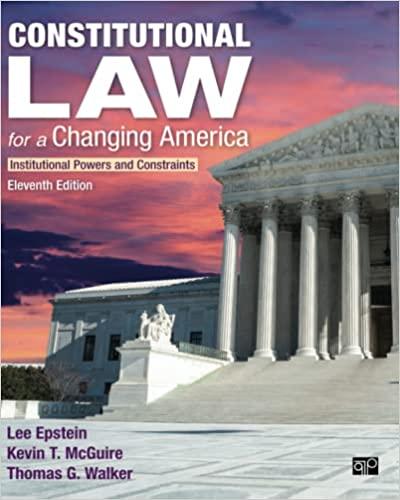Question
One Case / One Statute CREAC Exercise To: Legal Department Intern Fr: Supervisor Re: Analysis needed - impact of new case on whether area is
One Case / One Statute CREAC Exercise
To: Legal Department Intern
Fr: Supervisor
Re: Analysis needed - impact of new case on whether area is "generally accessible" to motor vehicles within meaning of Michigan statute on operating a vehicle while intoxicated
Date: Today
A very high-level employee in our Michigan office was recently arrested and charged with operating a motor vehicle while intoxicated. The relevant statute is M.C.L.A. 257.625. The employee lives in a gated community. Drivers are only allowed to enter the community if (1) they are able to open the entry gate with a security pass, which is issued to all homeowners within the community, or (2) they enter between the hours of 7am and 7pm and they are visiting a resident of that community, and the resident has left the visitor's name with the security guard who monitors the entry gate during those hours. The employee had consumed three glasses of wine in her home. As she began preparing for bed at approximately 9pm, she realized that she had left her car parked in a gravel-covered area on the side of her house. That gravel-covered area is technically on the employee's property, but the rules of the homeowner's association prohibit leaving a car parked in such an "unsightly" way. The employee went outside and drove her car from the gravel-covered area into her driveway. This did not require the employee to drive the car on the street. As the employee was driving the car, a police officer happened to be leaving a house across the street. When the employee parked and exited his car, the officer saw the employee drop a set of keys. The officer walked across the street to assist the employee. In his police report, the officer writes that, as he bent over to help the employee search for her keys, he smelled a strong odor of alcohol. Having observed the employee driving the vehicle, the officer used his radio to call for a breathalyzer unit and administered field sobriety tests while waiting for that unit to respond. The employee failed several of the field sobriety tests, and the breathalyzer reported a blood-alcohol content of .10, which is above the statutory limit. A colleague read a newspaper article about a new case from the Michigan Supreme Court called People v. Rea, and it sounds like the case might be either really bad or really good for the employee. Can you please write me a few paragraphs analyzing whether we have any good arguments that a residential street and driveway in a gated community does not fit the statutory definition of "generally accessible to motor vehicles" under the reasoning of the Rea case? You'll want to read the concurring opinion and the dissent as well as the majority opinion; my colleague tells me that those opinions provide helpful insights on the majority opinion. Please organize your analysis using the "CREAC" paradigm. I attach the relevant portions of the case and the statute.
Step by Step Solution
There are 3 Steps involved in it
Step: 1

Get Instant Access to Expert-Tailored Solutions
See step-by-step solutions with expert insights and AI powered tools for academic success
Step: 2

Step: 3

Ace Your Homework with AI
Get the answers you need in no time with our AI-driven, step-by-step assistance
Get Started


